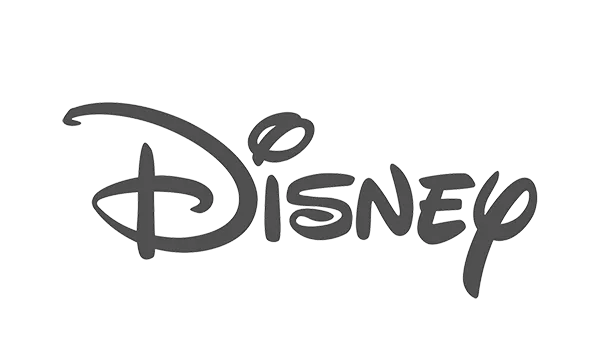Why is an org chart critical? It’s not just an org chart—it’s a workforce plan. This applies in any workplace, but it’s especially critical in the initial days of Mergers & Acquisitions.
Starting out a merger or acquisition with an integrated org chart signals thought, preparation, strategy, and fit. It is a confirmed vision of the newly combined organization.
An org chart on Day 1 tells every employee: We have a plan. We’ve thought about this. You belong here. Without it, confusion takes over, productivity dips, and the rumor mill explodes. In M&A, uncertainty is inevitable, but one of the fastest ways to build trust is showing employees where they fit right away.
Why the Org Chart is More Than Just a Chart—It’s a Workforce Plan
An Org Chart Signals that Leadership is Prepared
There’s nothing worse than employees feeling like an afterthought in a deal.
An organizational chart serves as a strategic workforce plan, showing that leadership has done the work to structure the organization for success. HR plays a critical role in M&A success, and having a clear organizational structure from Day 1 is essential.
Forced Structural and Workforce Planning
Who reports to whom? What roles are critical for the future? How do teams need to be structured to hit the goals of the combined company?
The org chart isn’t just a document—it’s a strategic workforce roadmap. Research emphasizes that clearly defining roles and reporting structures can reduce employee uncertainty and improve retention rates post-merger.
An Org Chart Gives Employees Clarity
People immediately look for their name, their manager, and their peers. It tells them: Am I still valued here? Do I still have a future? It also helps HR teams proactively plan for redeployments, restructuring, and retention strategies. M&A integration teams should prioritize workforce planning early to mitigate disruption and align talent with strategic business goals.
Foundation for Communication
Employees want to know what’s changing, what’s staying the same, and where they fit. A strong Day 1 communication plan should include:
- An all-employee meeting with executives sharing the high-level workforce plan and vision for the future.
- Direct managers following up with team-specific details and individual conversations.
- Clear messaging on who to go to with questions and how updates will be handled.
Stabilized Productivity
When people don’t know who they report to or who makes decisions, work slows down. A well-planned workforce structure ensures business continuity.
Increases Retention
Employees who feel lost in the transition are more likely to look for jobs elsewhere. A clear workforce plan that incorporates career pathways and internal mobility gives employees a reason to stay.

The Worst-Case Scenario: No Workforce Plan, No Direction
Imagine logging in on Day 1 after an acquisition. You open your email. There’s no message from leadership. No clear reporting lines. No workforce plan. Just silence.
Slack and Teams light up:
- “Hey, do you know who we report to now?”
- “I heard there’s a reorg coming... should we be worried?”
- “Did you see the leadership team list? Our whole function is missing…”
Now, instead, imagine the opposite:
An interactive workforce plan, clearly mapping out reporting lines, key roles, and leadership teams, with a welcome message reinforcing the vision for the future.
Which scenario creates trust, and which one fuels fear?
Case Study: Strategic Acquisition of a Global Commercial Property Firm
Recently, I was part of a strategic acquisition where a global commercial property firm acquired a company not just for its product but for its people. Recognizing that employee experience would be critical, we ensured that Day 1 was a seamless transition.
We kicked off with live town halls to introduce the leadership team, followed by welcome dinners to integrate employees socially. Most importantly, we walked the new team through the org chart, the company mission, and how things worked in the new organization.
Employees felt immediately included, engaged, and reassured that they were part of something bigger. By prioritizing a clear workforce plan, we minimized uncertainty, maintained productivity, and boosted retention.
Best Practices for Workforce Planning in M&A
- Finalize reporting structures before Day 1. All leadership roles (VP+ or Director+) should be set and communicated early. Give them time to organize their teams before the announcement.
- Have a clear workforce communication plan. Managers should know exactly what to communicate, when to communicate it, and who to go to with questions.
- Use real-time, interactive workforce planning software. Static PDFs are outdated fast. Tools like Workday, Pingboard, and OrgChart Now keep workforce structures accessible and up-to-date.
- Reinforce cultural alignment and workforce strategy. The org chart is more than a hierarchy—it’s a reflection of the company’s values, priorities, and leadership philosophy. Use it to highlight diverse leadership, cross-functional collaboration, and career growth opportunities.
Have You Ever Thought About an Org Chart as a Workforce Planning Tool?
It sounds weird, but a simple organization chart signals intention, planning, and connection. Mergers & Acquisitions often create so much uncertainty—sometimes bordering on chaos.
If you’re part of the buying team, you might feel like you’re in the power seat, but that doesn’t mean future changes won’t impact you. If you’re on the acquired side, employees are asking: Will I have a role? Why are they buying us? What’s next?
An org chart that doubles as a workforce plan on Day 1 shows that leadership has thought this through. It signals that your executive team is prepared, they have clear business goals for the combined organization, and—most importantly—they are thinking about employees and what happens next for them.
This is where M&A deals succeed or fail. Not on financials, but on workforce planning, culture, and retention.
The Bottom Line
An org chart isn’t just an admin task. It’s a workforce planning tool that drives integration, alignment, and engagement. It shapes the employee experience, sets the tone for the transition, and builds confidence in leadership.
If you’re leading M&A integration, don’t treat the org chart as a checkbox—use it as a strategic workforce asset to drive culture, trust, and retention.










.png)













